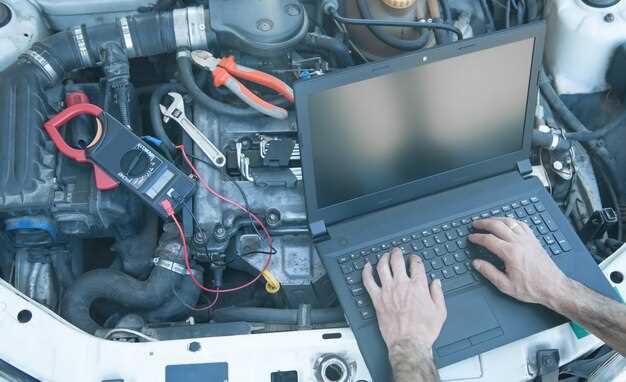
Common Transmission Problems and Fixes
- Arthur Rodriquez
- 0
- Posted on

The transmission system is a critical component of any vehicle, responsible for transferring power from the engine to the wheels. When transmission issues arise, they can lead to significant performance problems and may even put the safety of the driver and passengers at risk. Understanding how to identify these issues early on can prevent costly repairs and extended downtime.
Common signs of transmission problems include unusual noises, slipping gears, and fluid leaks. Identifying these symptoms promptly allows vehicle owners to address the issue before it escalates. Regular maintenance and attention to warning signs are essential to ensure the longevity of the transmission system.
Resolving transmission issues often requires professional expertise, but there are steps that vehicle owners can take to mitigate problems. Simple actions such as checking fluid levels and conditions can make a significant difference. Understanding the types of repairs needed and recognizing when to seek professional help are vital skills for any car owner to maintain optimal vehicle performance.
Recognizing Symptoms of Transmission Problems in Your Vehicle
Identifying transmission issues early can save you significant time and money on repairs. One of the most common symptoms to watch for is slipping gears. If your vehicle unexpectedly changes gears or has difficulty staying in gear, this can indicate a serious transmission problem.
Another symptom to recognize is unusual noises. If you hear grinding, whining, or humming sounds when shifting gears, it could signal internal transmission damage. Additionally, strange vibrations while driving may also point to issues within the transmission system.
Check for warning lights on your dashboard. If the check engine light or transmission fluid warning light illuminates, it’s a clear indication that you should inspect your transmission. Low or dirty transmission fluid can also lead to performance problems; if you notice puddles or stains under your vehicle, it might be time for a fluid inspection.
Delayed engagement is another red flag. If you experience a pause before your vehicle moves forward after shifting from park to drive, this could indicate issues with the transmission’s hydraulic system. Also, be aware of any burning smells, which could suggest overheating transmission fluid and potential damage.
No matter the symptoms, prompt attention to transmission problems can prevent more extensive repairs in the future, ensuring your vehicle operates smoothly and safely.
Step-by-Step Guide to Diagnosing Transmission Failures

Diagnosing transmission issues requires a systematic approach to accurately identify the underlying problems. Follow these steps to effectively diagnose transmission failures in a vehicle.
1. Gather Information: Start by collecting relevant information. Record any unusual sounds, warning lights, or shifting issues reported by the driver. Understanding the symptoms is crucial for pinpointing transmission problems.
2. Check Fluid Levels: Low or contaminated transmission fluid can lead to performance issues. Inspect the fluid level using the dipstick and ensure it is at the recommended level. Also, examine the fluid’s color and smell; burnt or dark fluid indicates a problem.
3. Inspect for Leaks: Look for signs of leakage underneath the vehicle. Puddles of red or brown fluid may indicate transmission fluid leaks, which can lead to transmission failure if not addressed promptly.
4. Conduct a Test Drive: Take the vehicle for a test drive to observe transmission behavior. Pay attention to any slipping, hard shifting, or delays when engaging gears. This firsthand experience can help in identifying specific transmission issues.
5. Scan for Error Codes: Use an OBD-II scanner to check for diagnostic trouble codes (DTCs). These codes can provide valuable insights into electronic transmission issues and help narrow down the possible causes.
6. Assess the Linkage and Cables: Inspect the transmission linkage and cables for damage or misalignment. Any issues here can affect the transmission’s ability to shift correctly and may need adjustment or replacement.
7. Examine the Transmission Control Module (TCM): If present, the TCM governs the transmission’s operation. Verify that it is functioning correctly and not presenting any faults. Reprogramming or replacing the TCM may be necessary in some cases.
8. Check the Torque Converter: A malfunctioning torque converter can cause significant transmission issues. Test for proper operation; if it is failing, it may need to be repaired or replaced.
9. Perform a Pressure Test: Use a pressure gauge to test the transmission pressure. Low pressure readings can indicate internal leaks or pump failure, both of which can lead to transmission malfunction.
10. Consult a Professional: If the problem persists or is beyond your capability to diagnose, seek assistance from a qualified mechanic. Their expertise can provide a more thorough analysis and resolution of complex transmission issues.
Following these steps diligently will enhance your ability to diagnose transmission failures effectively. Early detection and resolution of issues can save time and reduce repair costs.
Repair Options: From DIY Fixes to Professional Services

When it comes to addressing transmission issues, understanding the range of repair options available is crucial. These options can broadly be categorized into do-it-yourself (DIY) fixes and professional services. Each approach has its benefits and potential drawbacks.
DIY Fixes
For those inclined towards self-repairs, there are several common transmission issues that can be addressed without professional help. These might include:
- Fluid Leaks: Inspecting and replacing worn seals or gaskets can often resolve minor leaks.
- Fluid Levels: Checking and topping up transmission fluid is a simple task that can help prevent major issues.
- Electrical Connections: Cleaning or tightening loose electrical connections may fix shifting problems caused by faulty signals.
- Filters Replacement: Changing the transmission filter can improve performance and prolong the life of the transmission.
While DIY repairs can save money and time, it is essential to recognize when a problem exceeds basic fixes. Lack of experience can lead to further complications if not handled properly.
Professional Services
For more complex transmission issues, seeking professional assistance is often the best route. Some scenarios include:
- Diagnostic Services: Professionals use specialized equipment to diagnose transmission problems accurately.
- Rebuilds: In cases of severe wear or failure, a complete transmission rebuild may be necessary.
- Replacement: When repairs are not feasible, replacing the transmission unit can be the most reliable solution.
- Warranty Services: Utilizing professional services often ensures warranty coverage on parts and labor.
Ultimately, the choice between DIY repairs and professional services depends on the complexity of the transmission issue, the skills of the vehicle owner, and the resources available. Understanding these options empowers vehicle owners to make informed decisions for effective transmission maintenance and repairs.